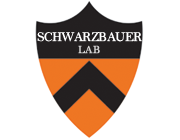α Integrin cytoplasmic tails have tissue-specific roles during C. elegans development
Publication Year
2014
Type
Journal Article
Abstract
Integrin signaling impacts many developmental processes. The complexity of these signals increases when multiple, unique integrin heterodimers are expressed during a single developmental event. Since integrin heterodimers have different signaling capabilities, the signals originating at each integrin type must be separated in the cell. C. elegans have two integrin heterodimers, α INA-1/β PAT-3 and α PAT-2/β PAT-3, which are expressed individually or simultaneously, based on tissue type. We used chimeric α integrins to assess the role of α integrin cytoplasmic tails during development. Chimeric integrin ina-1 with the pat-2 cytoplasmic tail rescued lethality and maintained neuron fasciculation in an ina-1 mutant. Interestingly, the pat-2 tail was unable to completely restore distal tip cell migration and vulva morphogenesis. Chimeric integrin pat-2 with the ina-1 cytoplasmic tail had a limited ability to rescue a lethal mutation in pat-2, with survivors showing aberrant muscle organization, yet normal distal tip cell migration. In a wild type background, α integrin pat-2 with the ina-1 cytoplasmic tail had a dominant negative effect which induced muscle disorganization, cell migration defects and lethality. These results show the α integrin cytoplasmic tails impact unique cellular behaviors that vary by tissue type during development.
Keywords
Journal
Int J Dev Biol
Volume
58
Issue
5
Pages
325-33
ISSN Number
1696-3547
Alternate Journal
Int J Dev Biol
PMID
25354452

